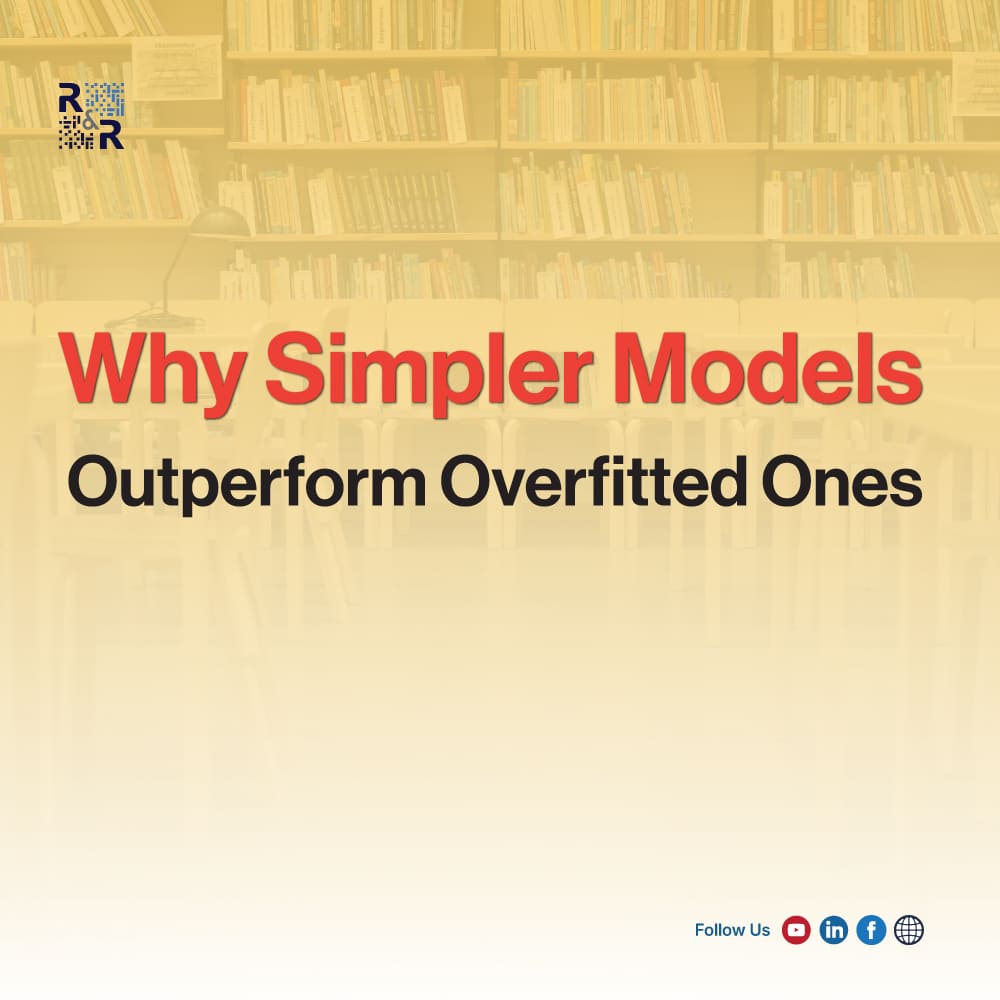In data analysis and research, complexity is often mistaken for sophistication. Many assume that the more variables or equations a model has, the stronger it becomes. However, the reality is quite the opposite — simpler models often perform better than overly complex, overfitted ones.
Let’s explore why simplicity often wins, both statistically and practically.
What Is Overfitting?
Overfitting occurs when a model learns not just the underlying trend but also the random noise in the training data. This results in high accuracy on the training dataset but poor performance on unseen data.
In simpler terms, an overfitted model “memorizes” instead of “understanding.”
The Problem with Overfitting
When your model fits training data too closely, it loses generalization power — the ability to perform well on new, real-world data.
This leads to:
- Poor prediction accuracy in deployment.
- Misleading confidence in model performance.
- Wasted time and resources due to unreliable insights.
📊 Example:
In a regression analysis predicting student performance, adding every possible variable (e.g., time of day, clothing color, breakfast type) may improve training accuracy but harm test accuracy because the model becomes cluttered with irrelevant noise.
Why Simpler Models Win
1. Better Generalization
Simple models like linear regression or logistic regression capture only essential patterns. This helps them generalize across different datasets.
2. Improved Interpretability
Decision-makers prefer models they can understand.
Complex models (like deep neural networks) may provide accuracy, but simple models offer clarity and trust — essential in academic, policy, and business decisions.
3. Reduced Variance
Simple models are less sensitive to random fluctuations in data, meaning their predictions remain consistent across samples.
4. Cost and Time Efficiency
Complex models demand heavy computational resources and long training times.
Simple models are easier to maintain, update, and scale.
Model Selection: How to Find the Right Balance
Use AIC and BIC
- Akaike Information Criterion (AIC) and Bayesian Information Criterion (BIC) help evaluate model quality by penalizing unnecessary complexity.
- Lower AIC/BIC values indicate a more parsimonious (efficient) model.
Apply Cross-Validation
Cross-validation tests your model on multiple data splits to ensure consistency. It helps identify whether the model can perform well beyond the sample data.
Follow the Parsimony Principle
Also known as Occam’s Razor, this principle states that the simplest explanation that fits the data is usually the best.
Visual: Model Complexity vs. Prediction Error
Below is a conceptual chart showing how performance changes with model complexity:
| Prediction Error Bias ↓ | Variance ↑ |
| Simple Models ↑ Accuracy | Overfitted Models ↓ Real Accuracy |
Model Complexity →
This curve illustrates that as complexity increases, bias decreases—but after a point, variance skyrockets, and overall error rises.
Feature Comparison Table
This table provides a concise, side-by-side comparison of all the features.
| Feature | Simple Model | Overfitted Model |
| Training Accuracy | Moderate | Very High |
| Test Accuracy | High | Low |
| Interpretability | Clear | Complex |
| Generalization | Strong | Weak |
| Resource Use | Low | High |
Case Example
At Research & Report Consulting, we’ve reviewed dozens of research projects where overfitted models failed during real-world testing.
When simplified and cross-validated, accuracy improved by up to 25%, and insights became clearer and publishable.
References
- Burnham, K. P., & Anderson, D. R. (2002). Model Selection and Multimodel Inference. Springer.
- https://www.ibm.com/topics/overfitting
- https://towardsdatascience.com/understanding-overfitting-in-machine-learning
- https://machinelearningmastery.com/a-gentle-introduction-to-the-bias-variance-trade-off/
Want research service from Research & Report experts? Please contact us.

